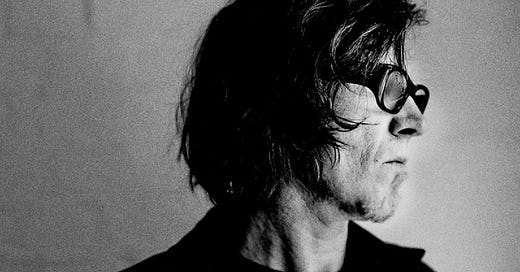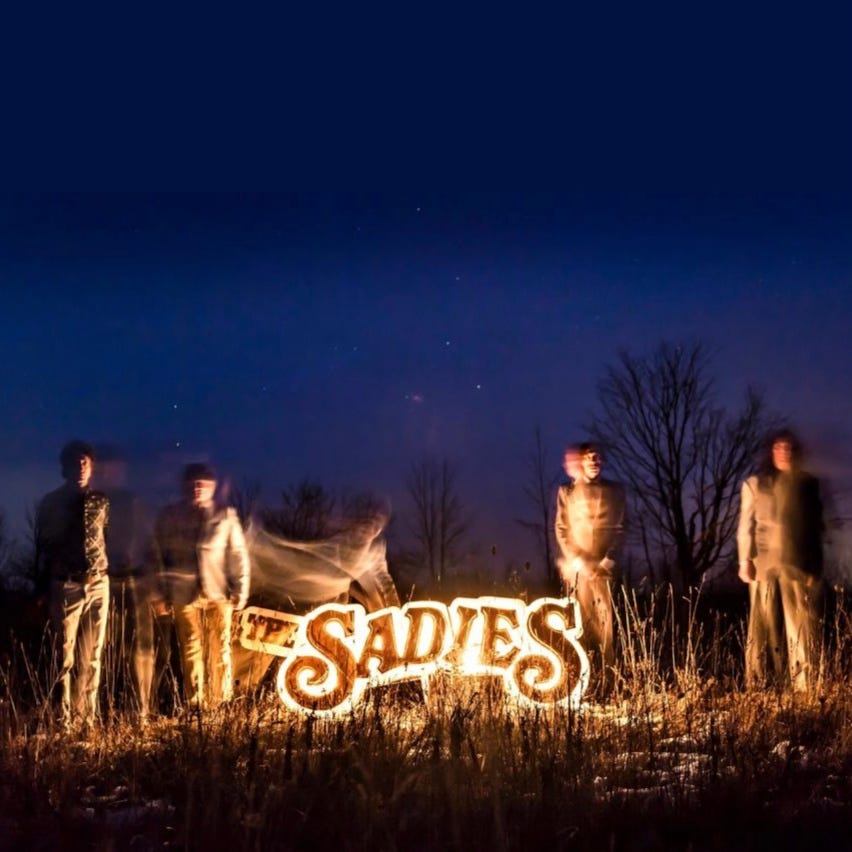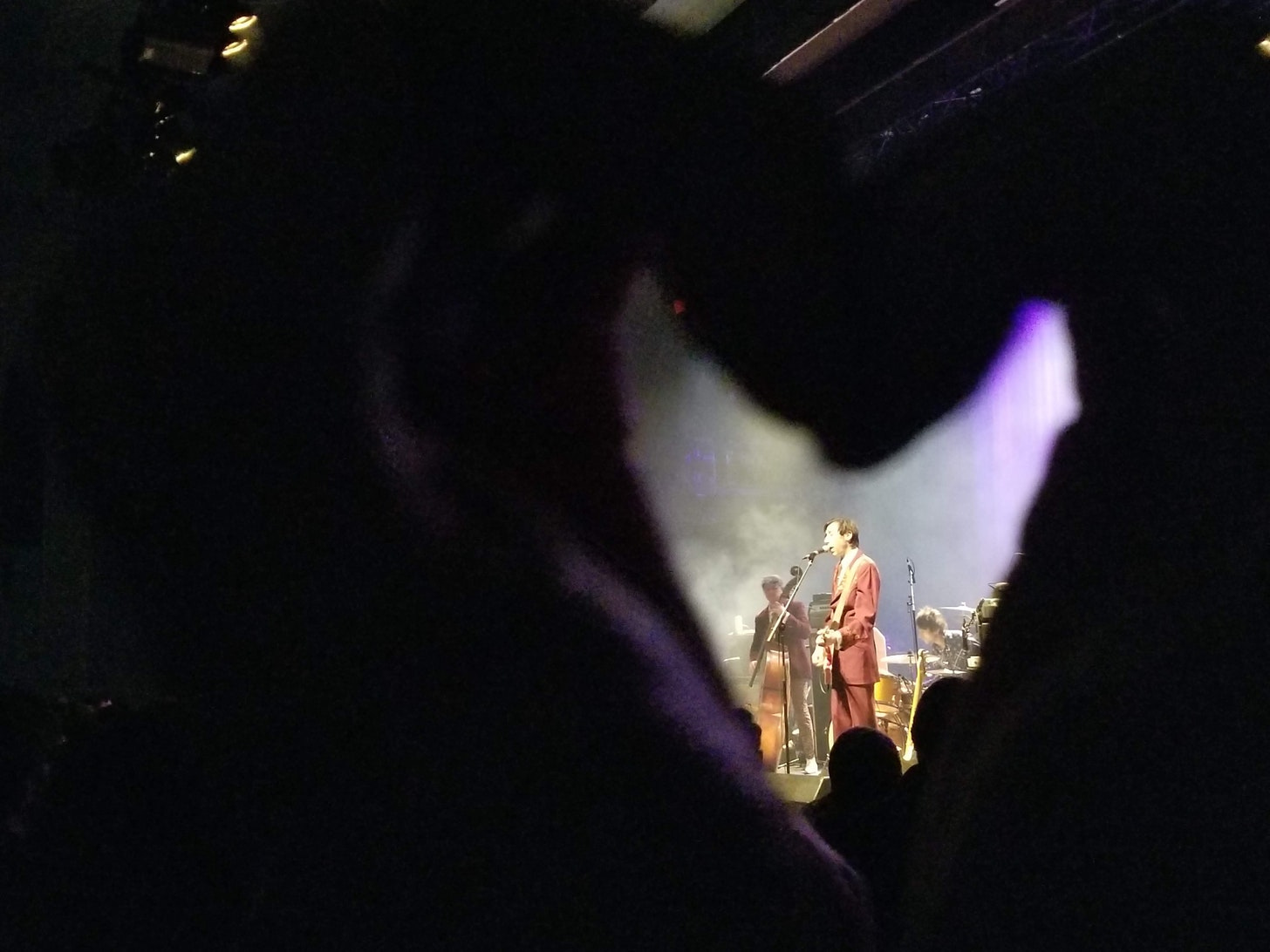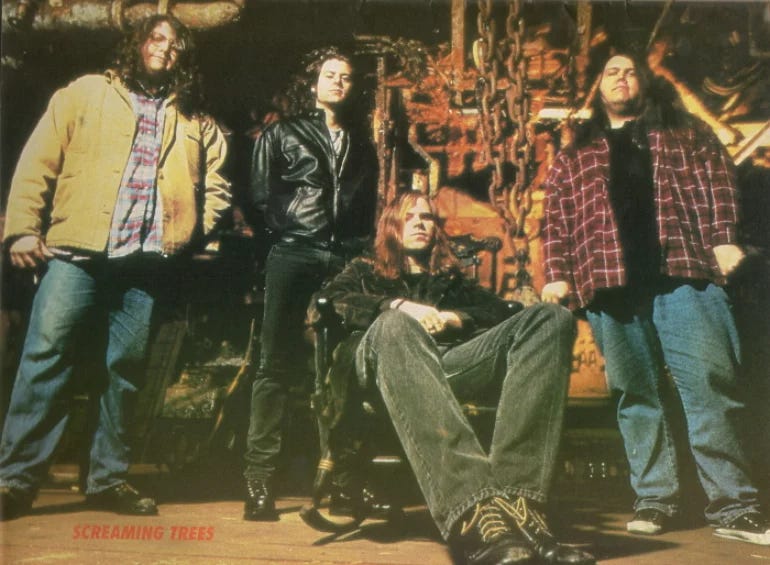Remembering Mark Lanegan & The Sadies' Dallas Good
Artist primers on two beloved musicians, recently passed
My next, long-gestating playlist is ready to go, but sometimes current events intervene. In this case grim ones. I’ve spent the last few days reading obits and checking in on friends a few scant degrees from the dead being written about.
In the past week we’ve lost Mark Lanegan, an artist who I’ve probably spent more time listing to than any other these past two years, and Dallas Good, leader of The Sadies, a group sometimes referred to the best damn band in Canada if not the best live rock’n’roll band in the whole damn world.
Here are two playlists which I’ll present less as authoritative readings of their work than as compilations I made to enable my own exploration. (I was late to both artists.) Suggestions on what I’ve missed and where I’ve messed up are very welcome.
The Sadies’ Dallas Good: Canadian country punks known worldwide
# of Tracks: 30+
Length: about 90 minutes
Link: spoti.fi/3sSBjJm (Spotify) — apple.co/35lFB3N (Apple Music)
The importance of Dallas Good and his band The Sadies first took root in my brain when the Arcade Fire’s Richard Reed Parry, an acquaintance from indie rock doings, told me they were his favorite band.1 But my personal discovery and first proper listen only happened after I married in to a Canadian family and began spending time in Toronto, where I quickly realized The Sadies were a beloved regional standard, akin to hockey2 and bagged milk.
A live band first and foremost, they are best known as serial collaborators who toured with Neko Case, Kurt Vile, Buffy Sainte-Marie, Neil Young, and Gord Downie.3 In each instance the expectation wasn’t that they’d just open up for these legends but play alongside them.
The details of Dallas’s death last week at the age of 48—while under a doctor’s observation no less—are shocking for anyone pushing 50 like myself. What made it more so are intimate family ties. My spouse and I are friends with The Sadies’ drummer Mike Belitsky, his partner Damian Rogers,4 and their young son. I learned of Dallas’ death not from a Tweet but a text message that’d just pinged my spouse’s phone.
At Mike’s invitation, I was lucky enough to see The Sadies a handful of times in recent years. The gigs I remember most distinctly were at the downtown Brooklyn location of a Texas BBQ restaurant, shortly before the birth of my son and then, about a year later, at a beer festival held in an industrial hanger in the same borough’s Sunset Park neighborhood. Our kid came to that one. (Don’t worry: the gig was open air and we kitted him out with noise cancelling headphones. I’m still tickled it was, by any reasonable estimation, his first live show.)
The adjacency of this music to beer and barbecue was no accident. Like anything great, The Sadies’ music can reward close contemplation. However, the root pleasure of it is utilitarian: impulse, motion, celebration, love for the history of 20th century North American popular song. The Sadies are an amalgam of garage rock, early R&B, country sounds, surf music riffs, and punk rock energy, all performed with virtuosity and commitment. Don’t take it as a sign of disrespect when I say they are meat and potatoes American music—like The Band before them, a Canadian export doing our music better than anyone in the land where it supposedly came from.
I post this playlist with big feels to those in my circle who loved him; and with the hope it’ll introduce you to the music Dallas so obviously made with love.
Spotify version
Apple version
Mark Lanegan: a heavy dose of dark Mark
# of Tracks: about 100
Length: 7 hours
Link: spoti.fi/3JP3TSy — apple.co/3LWnSkm (Apple Music)
Prior to the pandemic I simply thought of Mark Lanegan as the former lead singer of the Screaming Trees—as Pitchfork put it a “workmanlike rock band blessed with a distinct vocalist…a character actor specializing in a certain kind of brooding, wizened masculinity.” When The National signed to the Beggars Banquet label in the mid-00s, Lanegan was already on the roster and they shared an A&R person named Roger Trust. To this day I have endless respect for Roger’s taste and the foresight of his signings. But I still didn’t listen. I made the mistake of typecasting Lanegan as one of those Grunge Guys, a genre whose charms I’ve always been immune to.5
Then, early on in the pandemic, I was drawn into his world from a fresh angle, his memoir Sing Backwards and Weep, the autobiography he wrote with the encouragement of Anthony Bourdain6 and a further push and editorial assist from Mishka Shubaly,7 a denizen of the same early 00s NYC music scene I came out of.8 I wouldn’t call Mishka a close buddy but I’d certainly call him a friend and fellow traveler.
Published in April 2020, shortly after lockdown, I was riveted reading about Lanegan’s path from redneck delinquent in an eastern Washington hick town to international rock star with heroin shivers. Along the way there were run-ins with Nick Cave, Ministry’s Alain Jourgensen, Kill Rock Stars’ Slim Moon, Guns N’ Roses’ Duff McKagan, and Nirvana’s Kurt Cobain. Turns out he was a through line connecting so many icons of my youth.
Consistent with everything in his career, the book got attention and acclaim…but not too much.9 Lanegan is the type of artist whose voice is so distinctive, whose access to it so intuitive, it’s easy to take for granted. In that way, he reminds me of Billie Holiday or Leonard Cohen, Jimmy Scott or Cat Power’s Chan Marshall—artists whose ability to set a mood is so effortless, interrogating it at close range can seem superfluous.
More to the point, where to begin listening? Lanegan’s discography is labyrinthine to the outsider and might seem undistinguished if you focus on his biggest hit as if it were a key document. Like The Sadies, he featured on the recordings of other artists so frequently it’s clear he was respected by his peers, yet the collaborations poured out with such profligacy, and sometimes seemed so unexpected, you wondered if there was any quality control. As comedian Rob Delaney put it yesterday:

Many thanks to Mishka whose listening tips were crucial to helping me find my way in.10 Little did I know how deep in I'd end up traveling. My Lanegan playlist is over 100 songs long. Narrowing him to ten or twenty songs seems counter to the nature of his gift. It’s not about the hits. It’s about a point of view and a grace tested by serious misadventure. It’s about the character actor as perpetual scene-stealer. It’s about a featured singer able to transform other people’s music into his own home. It’s about a world weariness that says “keep going.” It’s about a gothic sort of self-reflection at the center of which lies a cloud, an unknowable something that makes you want to listen on in case you might learn something more.
Is it a surprise Mark Lanegan has died? Not really. In December 2021, he published Devil in a Coma, a second memoir about his bout of Covid, during which he was put into a medically-induced coma.
His body had endured a lot. But this quote from an interview he did in The Guardian in 2020 sums up the perpetual hope and surprise that sprouted out of that dark garden of experience: “Somebody said to me once, ‘You either get old or you don’t.’ Turns out, I’m quite happy to be getting old… I wish I could say I’m a perfect example of transformation, and transcendence, but I’m basically still a guy who considers himself a breakfast cook who’s been singing for a while... I’m still a deeply flawed person. The difference is, I’m aware of it.”
One of Lanegan’s nicknames was Dark Mark. It suits him. But since I’ve discovered his dark art in these strange quarantine times, it’s brought more light to my life than any other recordings. I hope this playlist increases the likelihood some of you might grow old with this music because he’s no longer able to.
Spotify version
Apple version
Two easy roads in to the music…
Richy wasn’t blowing smoke.

He has produced a pair of forthcoming records, a duo project with Dallas Good and what is likely to be The Sadies final album. I look forward to hearing them.
True Canadian’s will tell you” “There’s no such thing as ‘ice hockey’—just ‘hockey’ thank you very much.”
Downie’s name may be unfamiliar to non-Canadians. He is music royalty north of the border thanks to his role as frontperson of the quintessential big-in-Canada band The Tragically Hip.
Here’s a lovely picture of Dallas from Damian’s tarot blog elsewhere on Substack.
This morning, my friend Ansley Simpson sent me a couple of photographs that she took from the side of the stage when The Sadies opened up for Kurt Vile & The Violators. She thinks it is my hand making the heart in the image below, and I almost remember doing this, standing with her and, again, my son, dancing at the edges, lost inside the sound… May you be held in this love.
It’s hard to have bouts of historical nostalgia about music you had deep exposure to the first time around. I fell in love with Nirvana in real time; I still remember the first time I head Screaming Trees’ career-making radio staple “Nearly Lost You” featured prominently in Singles, the 1992 film by Cameron Crowe which seemed to both precede and amplify the Seattle scene’s cultural footprint.
For some reason, I felt there was a decision to be made between alt-rock and the indie underground and that these two bands fell on either side of a deep divide. To me Nirvana represented the latter. They were a kind of gateway drug for eclectic musics be it pigfuck or twee, electronic or experimental. I chose this route less traveled, music for people in reading glasses and cardigan sweaters.
By contrast, Screaming Trees were alt-rock, music for burly jocks and radio rotation. I actively rejected the path the Grunge Guys opened up: Pearl Jam > Alice In Chains > Stone Temple Pilots > Creed. (Feel free to read that as either a chronology or a steady devolution in quality.) The inclusion of the Trees song in Singles was was one of the things that led me to place them in the opposing camp; another was the fact that they looked like folks you didn’t want to bump into in a darkened alley:
Anyway, for some reason I confused Screaming Trees for Grunge Guys where really, as yesterday’s New York Times obit put it, they were “a key player but not a marquee act.” When surrounded by mooks, it’s sometimes hard to discern legends. The afterlife is more forgiving that way, ergo…
From the Seattle episode of Bourdain’s Parts Unknown:
If you need a taste of Mishka on Lanegan, I believe this is where the relationship started, and he went long in podcast form today right here.
If you have someone to thank for my label Brassland’s decade plus relationship with Baby Dayliner it is Mishka. He was the manager at the moment we discovered him.
I’d suggest the two collaborations with Duke Garwood that Mishka suggested to me Black Pudding (2013) and With Animals (2018)—as well as one I came to on my own Houston: Publishing Demos 2002 (2015), which Lanegan released somewhat reluctantly, a decade after it was made.









